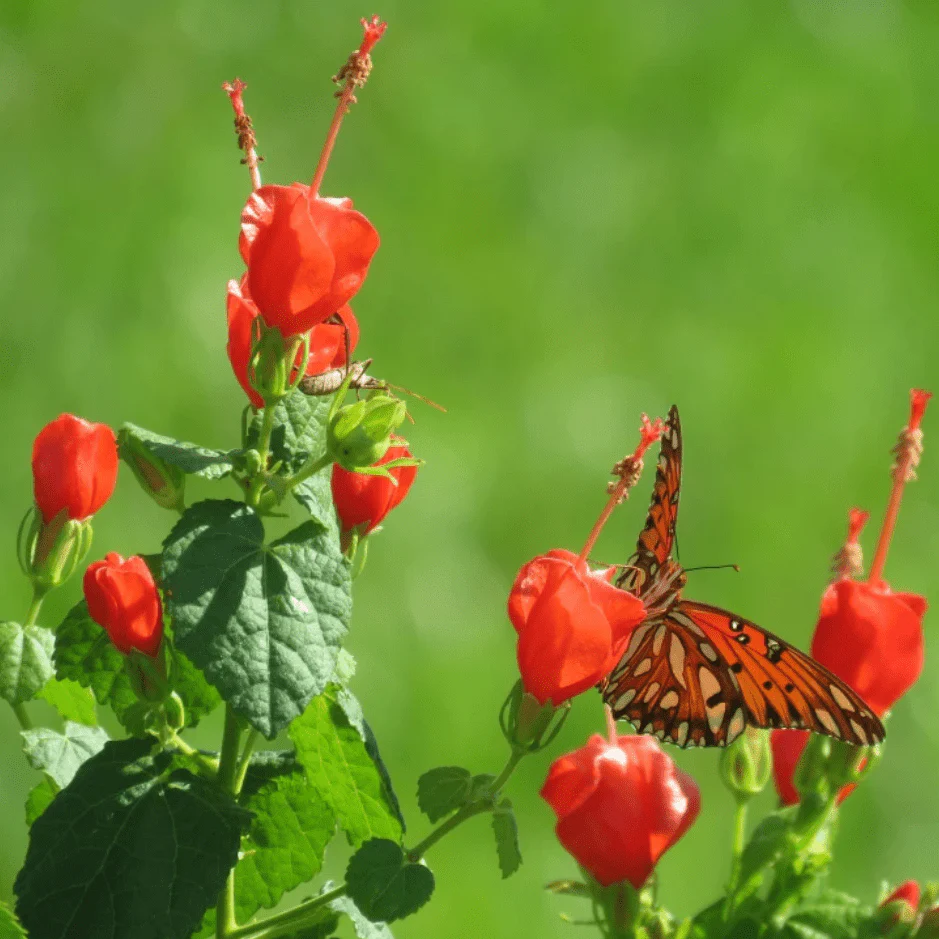Turk's Cap
- Shipping Available
- In stock, ready to ship
- Backordered, shipping soon
Pickup currently unavailable at Native Gardeners
Pickup currently unavailable
407 South Pipeline Road East
Euless TX 76040
United States
+12148140932
Malvaviscus arboreus var. drummondii
Also known as Turk's Cap, Drummond's Turk's Cap, Drummond Turk's Cap, Wax Mallow, Drummond's Wax Mallow, Drummond Wax Mallow, Red Mallow, Texas Mallow, Mexican Apple, Sleeping Hibiscus, Bleeding Hearts, Manzanita
This delightful spreading shrub can reach heights of 2-3 feet, and occasionally, it might surprise you by growing as tall as 9 feet. Its charming, bright red pendant flowers are reminiscent of hibiscus and are never fully open. Instead, their petals beautifully overlap to form a loose tube, with the staminal column playfully protruding. This unique shape reminds many of a Turkish turban, so it endearingly goes by Turk's Cap. It's wonderfully suited for those shady spots in your garden.
The plant honors Thomas Drummond, a dedicated Scottish naturalist born in the late 18th century. In 1830, he embarked on an exciting journey to America, where he spent 21 months eagerly collecting specimens from the lush landscapes of the western and southern United States. He carefully gathered specimens from areas between Galveston Island and the Edwards Plateau, including the Brazos, Colorado, and Guadalupe rivers. His remarkable collections laid the foundation for future studies, becoming the first widely distributed set among museums and scientific institutions worldwide. He documented an impressive 750 plant species and 150 bird specimens! Tragically, he passed away in Havana, Cuba, in 1835 while on another collecting adventure.
Turk's Cap is drought-tolerant and thrives in partially shady areas, making it a great choice for those tricky garden spots. It can adapt and flourish in various conditions, including full sun and heavy soil. Just remember that too much direct sunlight can make its leaves rough and smaller, turning them darker and puckered, so a little shade goes a long way.
Nectar Source Plant: Cloudless Giant Sulfur (Phoebis sennae), Zebra Swallowtail ( Eurytides marcellus)
Height: 2’-5’
Spread: 2’-5’
Bloom: May-November
Light: Partial Sun, Shade
Water: Medium
Zone: 7, 8, 9, 10
Origin: Texas
Spring Shipping:
Orders are shipped within 7-10 business days. We will email you if there are expected delays.
When you order plants from our nursery, you can expect them to arrive in the best possible condition. Our team carefully packs each order using sturdy, biodegradable packaging materials.
Your plants' appearance may vary depending on the season and their current growth stage. We may cut back the leafy growth of some plants to prepare them for shipment and transplanting.
5 Gallon and Up: Any plant purchased to ship over 5 Gallons will be shipped bare root. This means we will remove the plant from its original pot, remove the soil surrounding the roots, and wrap the roots with a biodegradable plastic bag. This reduces weight and the likelihood of damage during shipping.
Once your plants arrive, it is essential to plant them as soon as possible. This will help them rebound and thrive. If you cannot plant immediately, water regularly and keep the roots off heat-conducting surfaces.
Newly transplanted plants often require more water until their roots are well established. Plan to water them 1-3 times weekly for the first few months.
Pairs well with





















